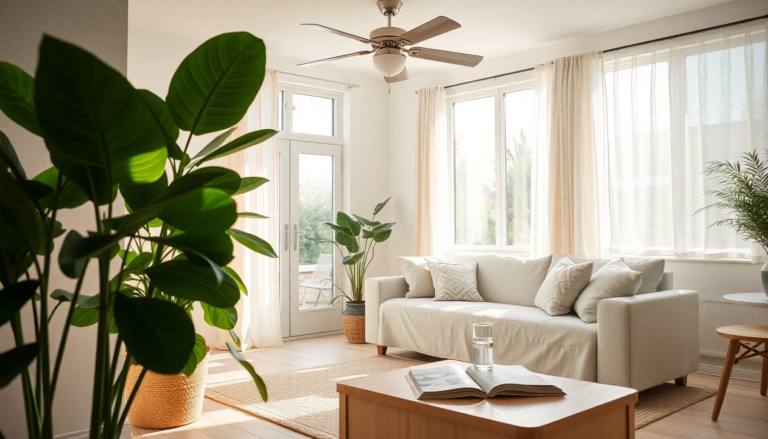Argomenti trattati
As the summer sun blazes down, many of us can’t help but look forward to those long, sunny days filled with outdoor fun. But let’s be honest: the heat can quickly turn our homes into stifling spaces, leading to a heavy reliance on air conditioning and soaring energy bills. The good news? There are plenty of creative and cost-effective strategies to keep your home cool without solely relying on your AC unit. By mixing and matching these techniques, you can enjoy the summer heat while keeping discomfort and expenses at bay.
Innovative Cooling Solutions for Your Home
Have you ever thought about how the color of your home affects its temperature? One of the simplest yet most effective ways to reduce indoor temperatures is through the strategic use of paint. Thanks to advancements in paint technology, thermal-reflective exterior paints are now available, designed specifically to deflect solar heat. Choosing a lighter color for your home’s exterior can significantly decrease the amount of heat absorbed, resulting in cooler indoor temperatures. If a full repaint isn’t in the cards, why not consider painting smaller areas like your trim or outdoor furniture to boost the cooling effect?
But paint isn’t the only player in the game. Landscape design can also work wonders in regulating home temperatures. Planting trees on the east and west sides of your property can provide essential shade, cutting down on direct sunlight exposure. And if space is tight, using trellises with climbing vines can create a shaded oasis without taking over your yard. These natural barriers not only enhance your home’s curb appeal but also foster a cooler environment inside.
Sealing Gaps and Enhancing Insulation
Now, let’s talk about another critical aspect: sealing those pesky gaps where cool air might escape. Have you checked for unnoticed cracks or holes in your windows and doors? It’s essential to ensure that conditioned air stays put, especially when the heat is on. Weather stripping and caulk are effective methods to seal these openings, and adding foam gaskets behind outlet covers can further boost your energy efficiency.
Proper insulation in attics and crawl spaces is equally vital for maintaining a comfortable indoor climate. While insulation is often thought of in terms of winter heating, it plays a heavy role in summer cooling too! Insulating hot water pipes and the garage ceiling can prevent heat from creeping into your home. Plus, installing a radiant barrier in the attic can help reflect heat away from your living spaces, drastically lowering temperatures and easing the load on your cooling system.
Modern Window and Shade Solutions
If you’re considering renovations, upgrading your windows is a smart move for energy efficiency. Casement or awning windows offer fantastic ventilation while keeping rain at bay, and double or triple-pane options provide superior insulation. You can even equip these windows with tinted or reflective coatings to block harmful UV rays and keep your indoor environment cooler.
Don’t forget about window treatments! Investing in quality options like blackout curtains or thermal shades can make a significant difference in temperature regulation, especially for those south- and west-facing windows that bear the brunt of the sun. For a tech-savvy twist, smart shades that can be programmed to open and close based on the time of day can keep your home comfortable with minimal effort.
Smart Home Technology for Energy Efficiency
Even if your home isn’t fully “smart,” incorporating a smart thermostat can dramatically enhance your energy management. These devices let you control your home’s temperature remotely, adapting to your schedule and cutting down on energy use when you’re not around. Some models even learn your habits, ensuring optimal comfort and efficiency without you needing to lift a finger.
By weaving together these innovative strategies, you can create a cooler, more comfortable living environment throughout the summer months. Each approach not only helps manage temperatures but also contributes to long-term savings on your energy bills. So, as you explore these techniques, remember: even small changes can lead to significant improvements in your home’s comfort level. Ready to beat the heat?

